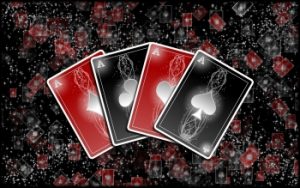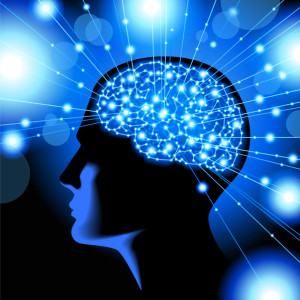 Last time, we discussed the four stages of mastery. Knowing them gives a better understanding of how the learning process occurs.
Last time, we discussed the four stages of mastery. Knowing them gives a better understanding of how the learning process occurs.
First, it should be understood that poker does not progress evenly through these four stages. It would be clearer to say that individual skills go through them. For example, your preflop 3-betting game might have reached the fourth stage, while your flop float betting might be in the third stage of conscious competence. Every poker player has their unique set of skills distributed across various stages of mastery. To truly understand the difference between conscious and unconscious competence, we need to understand the difference between conscious and unconscious thinking.
Let's start with the obvious – when thinking consciously, you are aware of all the data being processed at that moment and experience it all. When thinking unconsciously, you only experience a fraction of the processed data. For example, you might have only a vague awareness that you are playing poker. When playing unconsciously, you don't need to actively think about the size of each bet, every card on the board, etc. The information coming to your mind is very compressed, similar to walking to the store by the shortest route without thinking about how to move your legs or avoid obstacles.
The type of conscious thinking tends to deviate from its course. It is a process-oriented type that often changes through language. If a player consciously thinks about how to play a hand, there is a high probability that they consider everything step by step: “Okay, he raised, which means he could have only X, Y, Z hands, but on the turn, he bet this much, so he can't have Z, and if he had Y, he probably would have 3-bet,” and so on.
The type of unconscious thinking is characterized by being fast. It is precise and intuitive and usually does not depend on a step-by-step process. If you see A22 on the flop, your subconscious immediately decides what to do; it has only one answer for such a situation and requires no deliberation.
So the conclusion is that conscious thinking, due to its step-by-step process, is slow, while unconscious thinking is fast. This is important. The subconscious controls motor skills, internal organs, etc. Therefore, it must be fast and know exactly what to do at any given moment. The conscious mind does everything slowly, focusing on the process itself.
To determine whether the conscious or subconscious mind is examining a situation, you need to pay attention to a few signs: if you experience every element of the process, if the situation changes through language (this can happen only in your head), if it is considered step by step, and everything happens slowly, then it is likely that the conscious mind is “employed.” But if everything is very vague, you automatically know the answer, and everything happens quickly, then it is happening in the subconscious.
Talking to yourself is one way to find out which aspects of thinking are in the conscious mind and which are in the subconscious. If you tried to follow your thoughts and say everything you think out loud (preferably to someone who is also experienced in poker), you would notice that most of what you say is related to conscious spots. It is very likely that you would simply skip the unconscious part of thinking, such as betting patterns or board interpretation, clear plays.
(preferably to someone who is also experienced in poker), you would notice that most of what you say is related to conscious spots. It is very likely that you would simply skip the unconscious part of thinking, such as betting patterns or board interpretation, clear plays.
The conscious mind, due to its tendency to be language-based and its ability to deviate from the course, is always more likely to “run aground” faster, as it is connected to verbal centers, the last sentences will always be about what you are doing at that moment.
This phenomenon can be observed by watching poker videos. Often, when the best players talk about poker strategy, their speech ends with the process in which their conscious mind is engaged. It is easy to guess that most first-level players have moved a large part of their game to the stage of unconscious competence. This happened because they played many hours, thus developing very effective habits. And for this reason, when they talk about poker consciously, they usually say only what the interlocutor wants to hear.
It is very easy to say only what is on the tip of your tongue, but to become a true teacher, videomaker, or poker coach, you need a broader set of skills – you must be able to explore your own subconscious processes, visualize how the situation would be conveyed through your student's eyes. You must be able to see the situation as a beginner would. That is why the best poker players are often not the best teachers.
Conscious and unconscious processes are closely related to decision-making time. What does a player do if they need time to make a decision? They try to analyze the hands again, thus going through their conscious mind again, trying to find a clear solution. This means either that their subconscious does not know what to do, or that they do not trust it (perhaps because of a big pot or a strange hand).
Why do players make decisions quickly in certain situations and more slowly in others? Because the conscious mind works slower than the subconscious, so the spots where they are forced to think longer are the spots where players “employ” their conscious mind.
This theory again connects with the idea of centrality – the closer the situation is to the center, the easier it is for the fast and confident subconscious to handle it. The further the situation is from the center, the more the conscious mind is needed. As soon as you leave the center, you will immediately notice a significant difference in the opponent's game and time requirements.
And what happens when the conscious and subconscious minds have different solutions for the same situation? Remember that for all intents and purposes, they are two different systems that are structurally separate. Imagine them as two separate neural networks in your brain, distant from each other. Although there is interaction between them, architecturally, they are still separate. More vividly speaking, there are two poker players within you – the conscious and the subconscious, and each is dedicated to your game. They are like Plato's horses, like mind and emotion, one pulling in one direction, the other in another. Your task, as the judge between these two forces, is to utilize their strengths and mask their weaknesses during each game.





